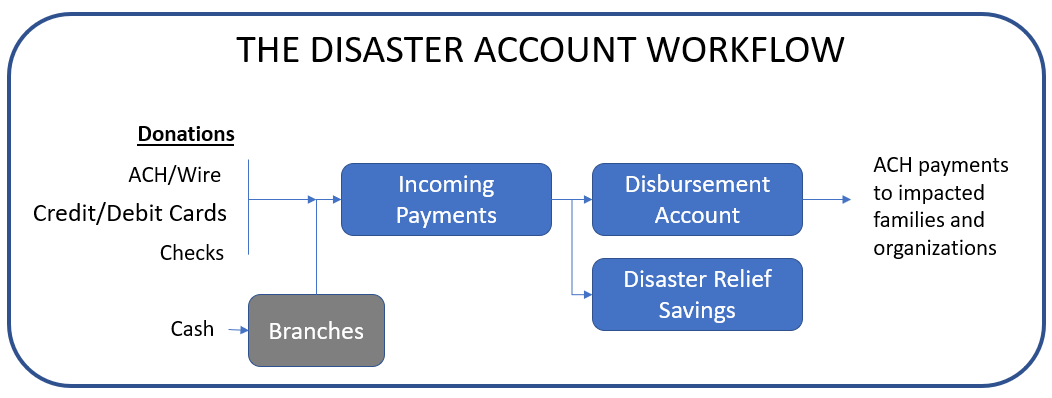Creating A Disaster Transactional Account Set
For banks looking to help their communities plus expand their relationship with their local county municipality, the Disaster Account Set (DAS) is an underutilized product with a growing need. For any given disaster, be it a hurricane, earthquake, tornado, or other event that displaces a material section of the population, there is an outpouring of support and donations. The problem is that most counties are not set up to be able to handle incoming payments or make outgoing disbursements for a disaster-specific purpose. As a result, most municipalities never get a chance to help the people in need outside of basic public safety.
The Need
Throughout the U.S., it is mainly at the county level where local disaster relief and public safety are coordinated. While some cities and districts may have a hand in this, it is really the county that will be taking the lead on disaster support, often in conjunction with their respective state.
While it is true that many worthy organizations do collect and disperse money, such as the American Red Cross, the problem is that the American Red Cross and other non-profits are restricted on what, when, and how they use the funds. In addition, donations to these organizations most likely cannot be earmarked to target a particular community. In other words, your donated funds might help the victims that you intended but might not.
The Solution
A Disaster Account Set allows the county to be ready to go at a moment’s notice to receive funds and then target the money to serve the community. This might include providing extended shelter, food, clothing, transportation, private debris removal, or mental health support.
A DAS is comprised of multiple operating accounts that are set up ahead of time. One transaction account will handle incoming payments, while another will handle disbursements. In addition to setting up the account, banks must establish specific accounts with multiple payment companies such as Venmo, Paypal, Square, Stripe, and others to handle electronic payments over the card rails. Banks then need to think through the handling of checks and then cash through their branch network.

In addition, a companion account or accounts are then set up to handle the various stages of disbursements. Here, and this is critical, banks must either establish or work with an existing “fund administrator” that approves the distribution of funds. Banks can take on this liability, but the reputational and operational risk of potentially dispersing funds to fraudulent entities or being criticized for the misalignment of priorities is the pitfall for the DAS. To mitigate this risk, banks need to make sure the partner county has a list of preapproved organizations and a list of clear priorities that generally begin with food and shelter. Counties may assign a partner community organization to help disburse funds so banks will need to build this into their account authorizations.
Going Above and Beyond
To the extent the bank can work with the county to establish a pre-staged website and social media sites where multiple forms of payments can be received, so much the better. In addition, a basic marketing plan and materials are also helpful. It is likely that your local county doesn’t have these banking, marketing, and technology skills, so this is an excellent way to add value.
To set up a DAS, banks should inquire with the law enforcement side of their county and see who is responsible for their “emergency operational center.” From there, see if they have a “donations management unit” or finance arm in which to coordinate. Chances are, they have not thought about setting up such a structure, so the inquiry will likely be met with strong appreciation.
If your bank is thinking of going down this path, start with conversing with the various counties you serve. Getting the county supervisors involved will help raise the profile of your bank. From there, you can establish a memorandum of understanding, include indemnification language, and discuss an operational project plan of how to execute this idea.
Relief efforts after a catastrophic event are chaotic by their very nature, and banks can take an active leadership role in helping their communities prepare for the worst. By giving your county the ability to aggregate and distribute funds post-disaster, you will provide a valuable service both for the county and, more importantly, for the very families you serve.

